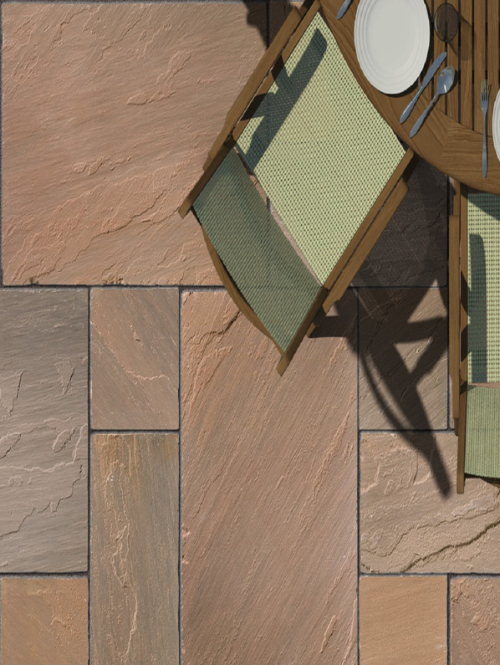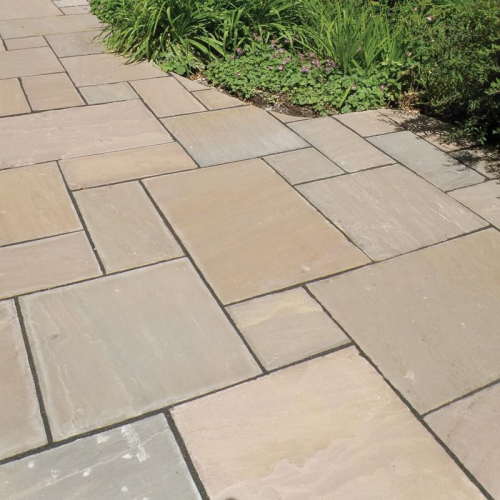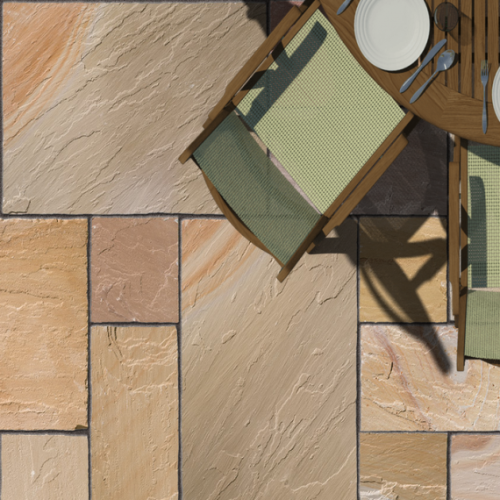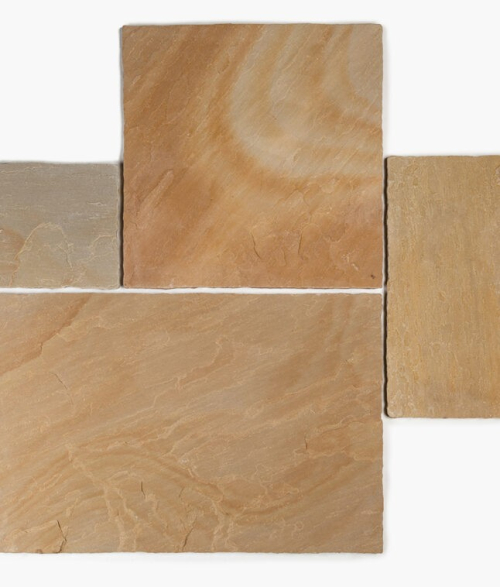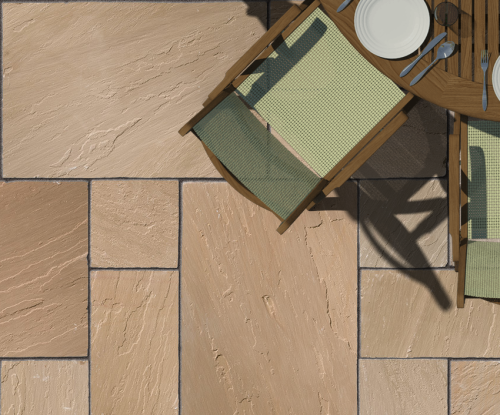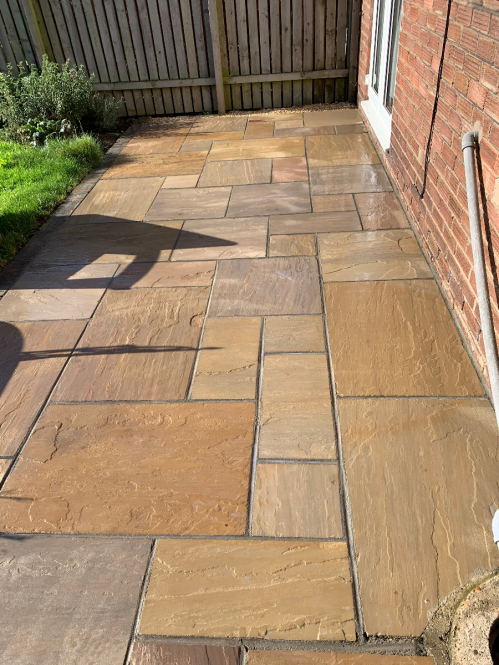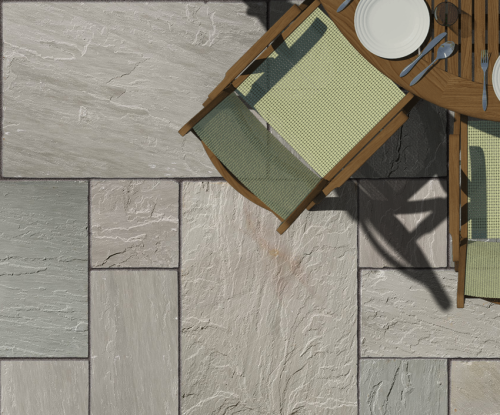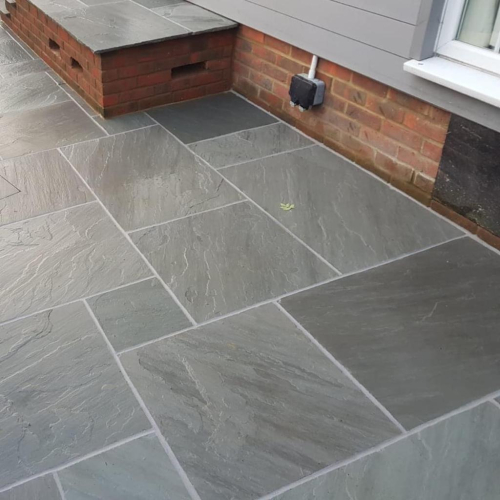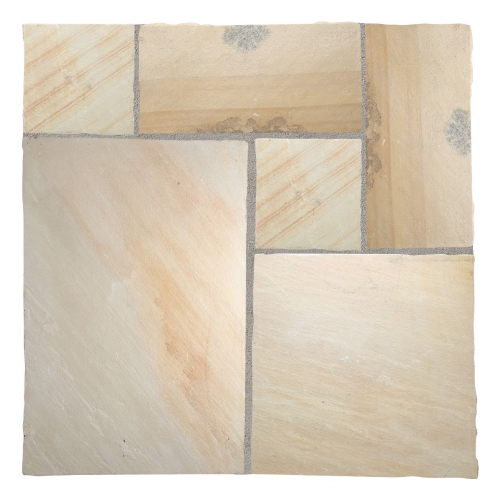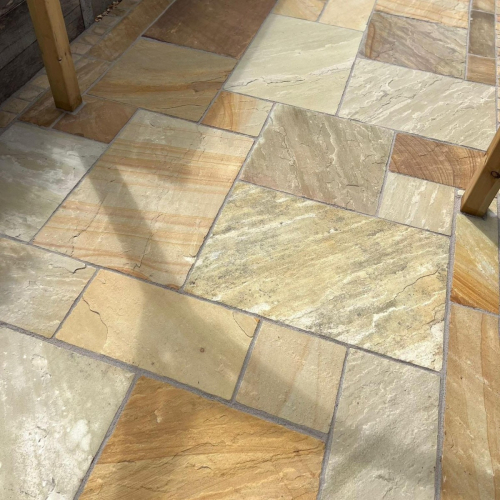Mixed Size Sandstone Packs
Indian Sandstone Paving
Indian Sandstone remains one of the most popular choices for patios and garden spaces across the UK—and it’s easy to see why. This natural stone offers a wide selection of finishes, textures, colours, and sizes, making it a versatile option for any outdoor design.
What truly sets Indian Sandstone apart is its unique character. Each slab features distinctive fossil markings and natural veining, ensuring that no two pieces are ever exactly alike. This individuality brings warmth and depth to any patio or garden.
With earthy tones such as natural greys, browns, and beiges, Indian Sandstone blends beautifully with almost any style of brickwork found throughout the UK. Whatever your design style or budget, we offer natural stone paving to suit every project.
Why Choose Indian Sandstone?
-
Extensive choice of colours and sizes
-
Stunning appearance in both wet and dry conditions
-
Low maintenance and long-lasting
-
Authentic natural look that never goes out of style
To learn more about our Indian Sandstone Paving or Outdoor Porcelain Paving Slabs, speak to one of our paving specialists today.
Mixed Size Sandstone Paving – Everything You Need to Know
Riven vs. Sawn Sandstone Paving: What’s the Difference?
The key distinction between riven and sawn sandstone paving lies in their surface texture and appearance:
Riven Sandstone Paving
-
Features a naturally split surface created by cleaving the stone along its grain.
-
Each slab has a unique, rustic texture with varying depths and tones.
-
Offers an authentic, traditional appearance, ideal for classic gardens or countryside settings.
-
Provides excellent slip resistance, making it a practical choice for outdoor areas.
Sawn Sandstone Paving
-
Cut with precision saws for a smooth, flat, and uniform finish.
-
Offers a modern, sleek look with clean edges and consistent dimensions.
-
Ideal for contemporary outdoor designs or minimalist spaces.
-
May be less slip-resistant when wet compared to textured options like riven paving.
Best Laying Patterns for Indian Sandstone Paving
Indian sandstone is highly versatile and suits various laying styles. Popular options include:
-
Random Course – A natural, informal pattern using mixed sizes for a traditional look.
-
Stretcher Bond – A clean, offset pattern great for rectangular pavers and modern layouts.
-
Herringbone – A striking 45-degree pattern, ideal for driveways and paths.
-
Basket Weave – A timeless design combining alternating pairs of pavers.
-
Circle or Radial Kits – Perfect for creating a central feature or focal point.
-
Versailles/French Pattern – A luxurious layout using a combination of various slab sizes.
When choosing a pattern, consider your space size, paver shape, and personal style. For best results, consult a professional landscaper or use sample layouts before installation.
Ideal Gap Between Sandstone Paving Slabs
The joint width—the gap between slabs—depends on project specifics and desired style:
-
Standard Gap: 3–5mm is typical for most installations, allowing for natural expansion and jointing.
-
Aesthetic Choice: Wider joints provide a rustic feel, while narrower gaps create a modern look.
-
Paver Size: Larger slabs may need slightly wider gaps to prevent cracking.
-
Material Compatibility: Some jointing materials require specific widths for durability and finish.
-
Edge Irregularity: Riven or hand-cut stones may need wider joints to accommodate shape variations.
Use spacers to keep joint widths consistent during installation for a clean, professional finish.
Is Priming Slurry Needed for Sandstone Pavers?
Unlike porcelain, priming slurry is not typically required for laying Indian sandstone paving. Standard mortar bed installation is usually sufficient.
However, if you're using dense, low-porosity sandstone or laying over certain substrates, a slurry primer can enhance adhesion. When in doubt, check with your contractor or materials supplier for recommendations based on your specific product.
Are Indian Sandstone Pavers Slippery?
The slip resistance of Indian sandstone depends on surface texture, finish, and external conditions:
-
Riven finish offers the best grip due to its textured surface.
-
Sawn or honed finishes are smoother and may be more slippery when wet.
-
All paving materials can be slippery in wet, icy, or mossy conditions.
-
Regular cleaning helps prevent the buildup of algae or dirt, improving grip.
-
Sealing can reduce water absorption and prevent slipperiness, especially in porous varieties.
For maximum safety, choose riven sandstone in high-traffic or wet-prone areas.

